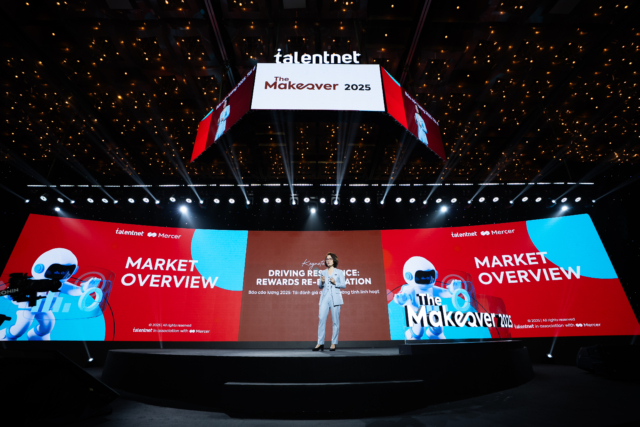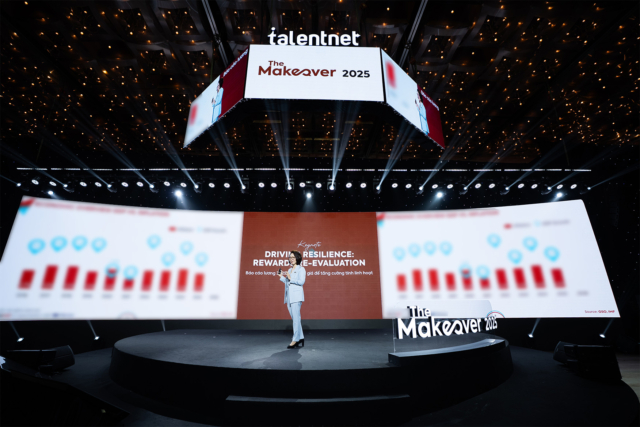Steps by Steps For HR To Lead Change Management In Manufacturing

Jul 26, 2025
Even the best manufacturing technology fails when leaders disagree, new systems disrupt daily work, and employees fight change. These aren't just small problems—they're the main reasons why change management in manufacturing becomes so challenging. This costs manufacturing companies millions in lost productivity, wasted money, and missed chances. Failed change hurts more than finances. It breaks employee trust and weakens companies when markets demand quick adaptation.

Key takeaways
- Change management in manufacturing fails 70% of the time when leaders send mixed messages and employees resist new processes—a structured five-step approach can reverse this trend
- Getting employees involved early and clearly explaining benefits turns resistance into support, making this a critical success factor rather than an optional step
- Strong, visible leadership creates the trust and clarity needed to navigate uncertainty and ensures lasting change
- Real success means embedding new behaviors into company culture, not just finishing the implementation phase
When senior managers send conflicting messages while shop-floor teams work without clear direction, even promising digital changes become expensive failures. Manufacturing faces unique change challenges—from complex technology to deeply rooted work habits—that need special approaches beyond standard change models. This guide gives HR leaders a practical five-step plan for leading organizational change in manufacturing environments. It directly tackles the leadership problems and employee resistance that kill most change efforts.
Step 1: Identify and communicate the need for change
Manufacturing companies must constantly adapt, yet many change efforts start without a clear reason that makes sense to everyone. Success starts with absolute clarity about why change is needed and what happens if nothing changes.
Good change planning begins by spotting specific triggers that demand action. Market shifts, poor performance, changing customer needs, competition, or new technology all signal the need for change. In manufacturing, these triggers often show up as supply chain problems, worker shortages, rising material costs, or new rules that change how operations work.
Creating urgency means more than announcing problems. You need data that shows both immediate risks and long-term costs of staying the same. Manufacturing leaders must put numbers on the impact of doing nothing—lost market share, higher costs, or competitive disadvantage. This urgency becomes the foundation for getting people committed and beating natural resistance to change.
The assessment should combine hard data with insights from employee interviews, performance reviews, and surveys. This complete approach ensures change efforts address real problems, not imagined ones. It also spots potential roadblocks early in planning.
Step 2: Prepare your people for the transition
Manufacturing change succeeds or fails based on people, making employee preparation the critical second step. This goes beyond simple communication. It requires building real understanding, commitment, and active participation from workers at all levels.
Building awareness starts with honest, clear communication about company challenges and how proposed changes directly solve these problems. Manufacturing employees, especially experienced ones, often know a lot about operational problems and potential fixes. Using this knowledge not only improves change planning but also builds crucial support from influential team members.
Forming a guiding team represents one of the most important decisions in manufacturing change management or change control. This team should include respected leaders from different departments—production managers, quality supervisors, maintenance leads, and frontline workers—who have both technical skills and influence with their teams. These people become change champions, turning high-level goals into practical, daily applications that make sense to their colleagues.
Getting employees involved in planning turns potential resistance into active help. As change expert Magali Mansion says, involving employees in solution development ensures project success by using their operational knowledge and creating ownership of results. This team approach addresses the fact that frontline workers often understand implementation challenges and unintended results better than senior management.
The preparation phase must also handle the emotional side of change. Acknowledge real concerns while building confidence in new approaches. Manufacturing workers often take pride in their specialized skills and established routines. Frame change as improving rather than replacing their expertise.
Step 3: Build a practical and realistic plan
Successful manufacturing change needs detailed planning that accounts for operational complexity, resource limits, and how production systems connect. A complete plan turns big ideas into doable strategies while giving clear guidance to implementation teams.
Essential Plan Components:
| Element | Purpose | Key Questions |
| Strategic Goals | Define success | What specific outcomes do we need? |
| Stakeholder Roles | Clarify responsibilities | Who does what, when, and how? |
| KPIs & Metrics | Track progress | How will we measure success? |
| Risk Mitigation | Handle problems | What could go wrong and how do we respond? |
Goal setting must be specific, measurable, and directly linked to manufacturing performance. Instead of vague objectives like “improve efficiency,” good plans set concrete targets such as “reduce setup time by 30%” or “achieve 99.5% quality standards.” These specific goals enable progress tracking and provide clear success measures for all stakeholders.
Planning must identify everyone affected by the change, from executives to equipment operators, and define their roles, responsibilities, and performance expectations. Manufacturing involves multiple connected functions—production, quality, maintenance, logistics, and safety—requiring coordination that prevents conflicting priorities or communication gaps.
Risk assessment and planning become especially important in manufacturing, where operational problems can spread through entire production systems. The plan must identify potential roadblocks—from technical integration challenges to workforce skill gaps—and establish backup measures that maintain operations during transition periods.
Step 4: Implement the change and empower your team
Implementation turns planning into reality, requiring careful coordination of technical, operational, and human elements within the complex manufacturing environment.
Employee empowerment during implementation means providing not just authority but also the tools, training, and support needed for success. Manufacturing workers need complete understanding of new processes, technologies, or procedures before being held accountable for results. This empowerment includes decision-making authority for operational adjustments and problem-solving within defined limits.
Training and resources must fit different learning styles and operational roles. Some employees learn best through hands-on experience, while others prefer detailed documentation or formal instruction. Manufacturing training should combine theory with practice, allowing workers to practice new skills in controlled environments before full implementation.
Communication during implementation requires constant reinforcement of the change vision and its connection to daily activities. Manufacturing workers need regular reminders of how their specific contributions advance overall objectives, especially during challenging transition periods when new processes may initially reduce productivity or create frustration.
Celebrating short-term wins maintains motivation and shows real progress toward larger goals. These celebrations should recognize both individual achievements and team milestones, reinforcing the behaviors and attitudes that support successful change adoption. This approach helps increase productivity in manufacturing by keeping teams engaged throughout the transformation process.
Step 5: Reinforce the change to make it last
Change sustainability requires deliberate effort to embed new behaviors, processes, and mindsets into company culture. Without this reinforcement, manufacturing operations often return to familiar practices, negating the benefits of successful implementation efforts.
Continuous monitoring against established KPIs provides objective evidence of change effectiveness and identifies areas needing additional attention. Manufacturing metrics offer clear, measurable feedback on whether changes are delivering intended results or creating unintended consequences that need addressing.
Evaluating performance management systems becomes critical during this phase to ensure new processes align with performance expectations and reward structures. This systematic evaluation helps identify gaps between intended changes and actual implementation outcomes.
Ongoing feedback collection through pulse surveys, focus groups, and informal discussions ensures that emerging issues are identified and resolved before they undermine change adoption. Manufacturing workers often notice operational problems or improvement opportunities that aren’t visible to management, making their input invaluable for continuous improvement.
Cultural anchoring transforms change from a temporary project into standard operating procedure. This involves updating job descriptions, performance standards, training materials, and recognition systems to reflect new expectations. Leadership support must continue beyond initial implementation, with managers and supervisors consistently modeling desired behaviors and holding teams accountable for new standards.

How to handle the biggest hurdle: employee resistance
Even the most carefully planned change efforts encounter resistance. Proactive resistance management converts skepticism into support through targeted strategies that address underlying concerns.
Communicate the ‘why’ clearly
Manufacturing employees need clear explanations of change reasons that connect to their daily experiences and concerns. Generic business justifications often fail to resonate with workers who focus on practical operational realities rather than strategic abstractions.
Good communication explains not just what is changing, but why current approaches are insufficient and how new methods will improve working conditions, job security, or professional development opportunities. The communication must address expected challenges honestly, acknowledging that transition periods may involve additional effort or temporary disruptions.
Involve employees in the process
Manufacturing workers possess deep operational knowledge that proves invaluable for identifying implementation challenges and developing practical solutions. Their involvement transforms them from passive recipients of change into active contributors to success.
Structured involvement mechanisms—such as cross-functional teams, suggestion systems, or pilot program participation—provide channels for employee input while maintaining project focus and timeline adherence. Recognition of employee contributions reinforces their value and encourages continued participation in change processes.
The lean employee engagement approach proves particularly effective in manufacturing environments, where worker empowerment directly correlates with successful change adoption and sustained performance improvements.
Ensure leaders are active and visible
Leadership behavior during change implementation sends powerful signals about organizational commitment and expectations. Manufacturing workers closely observe management actions for evidence of genuine support versus superficial endorsement of change initiatives.
Active leadership involves regular presence on the shop floor, direct engagement with workers, and visible participation in new processes. When leaders demonstrate willingness to learn new procedures and acknowledge their own learning curve, they build credibility and reduce employee concerns about unrealistic expectations.
Change management in manufacturing success depends on addressing the human dynamics that drive the industry’s failure rate. This five-step framework provides the structured approach needed to align leadership, engage employees, and embed lasting transformation into company culture. The difference between failed efforts and successful change lies in recognizing that manufacturing transformation is fundamentally about people, not just processes or technology.
HR leaders who master these principles can turn their organizations’ change capabilities into competitive advantages, creating resilient operations that adapt quickly to market demands while maintaining workforce engagement and operational excellence. When internal resources prove insufficient for managing complex transformations, partnering with expert HR consulting services can provide the specialized expertise and proven methodologies needed to ensure successful change implementation.
The organizations that thrive in today’s volatile manufacturing landscape are those that view change not as a disruption, but as an opportunity to strengthen their workforce and operations simultaneously. This approach to rebuilding HR in times of turbulence transforms challenges into sustainable competitive advantages that position companies for long-term success.

Solve your HR problems!
6th Floor, Star Building, 33 Mac Dinh Chi, Saigon Ward, Ho Chi Minh city, Vietnam




